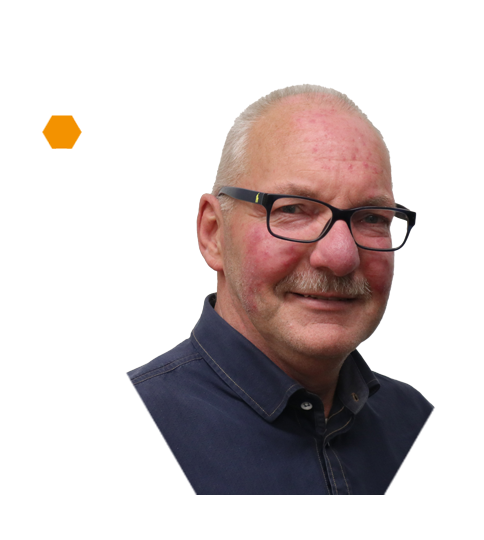LCW’s perspective on our joint collaboration
Leo Voorhout - Head of Production Engineering Aircraft Component Maintenance at LCW

As you probably know and have already read about, Aeronamic and Logistic Centre Woensdrecht (LCW) have been working together for years. Together, we are responsible for the maintenance of the F-35’s Power & Thermal Management System at the Woensdrecht Royal Netherlands Air Force base. This collaboration is a win-win situation in which we both develop new knowledge in the field of repairs. One of our main topics is additive manufacturing. Leo Voorhout, head of Production Engineering Aircraft Component Maintenance at LCW, is a member of our joint project team. We asked for his perspective on this unique collaboration and his view on becoming our partner.
Leo Voorhout: “I first met Aeronamic in 2014 when they were planning their pitch for the Maintenance, Repair and Overhaul contract for the F-35’s Power & Thermal Management System. They approached us since we already had a lot of knowledge and experience in that area. Aeronamic was awarded the maintenance contract and, from that moment on, a close collaboration was born. We’ve already tackled many challenges together and we’re becoming more professional and closer over time.” It might seem like a strange collaboration: a government organization and a commercially driven company. “Ten years ago, such a collaboration was unthinkable. But today, we work together with several private companies. LCW and Aeronamic are the perfect match, coming together in technology.”
A unique win-win situation
“Our goal when collaborating with Aeronamic is for us to learn from each other, to strengthen each other,” continues Leo. “We really do learn a lot from Aeronamic. How to approach things production-wise and design-wise for example. It saves both of us time and energy and helps us on our way. Conversely, Aeronamic also learns from us. They told me that the dynamics of our government organization are different when compared to the commercial world. For example, we have taught them how the military world deals with repairs, qualifications and certifications. But when it comes to technical knowledge in certain processes, we are also very happy to share our knowledge.”
Additive manufacturing
Leo: “At this moment, we are immersing ourselves in additive manufacturing. The 3D printing of metals is one of the technologies that LCW wants to invest in, because of all the possibilities it offers to military aviation. Since Aeronamic has been working on additive manufacturing for years, the company is the right partner for us in this field.” Aeronamic developed a three-year program consisting of theoretical and practical sessions. “Every two or three weeks, our joint project team has a meeting. We are very impressed with the structure and content of the program. Every session starts from scratch and dives deeper into the world of additive manufacturing. Our people speak the same language and are very open and constructive, which is very enjoyable. So far, the sessions have given us a lot of valuable information.”
Added value
Ultimately, LCW hopes it can operate independently in the field of additive manufacturing. Leo explains: “We want to increase the employability and availability of our material. Military systems last for 30 or 40 years, so we often face the challenge of parts and components being discontinued at some point. If we can print the parts ourselves, we’ll be able to offer enormous added value. At present, we are still far away from achieving our goal because legislation in the military world is very strict, but this professional collaboration has already enabled us to make a huge step in the right direction. I cherish this special bond with Aeronamic!”